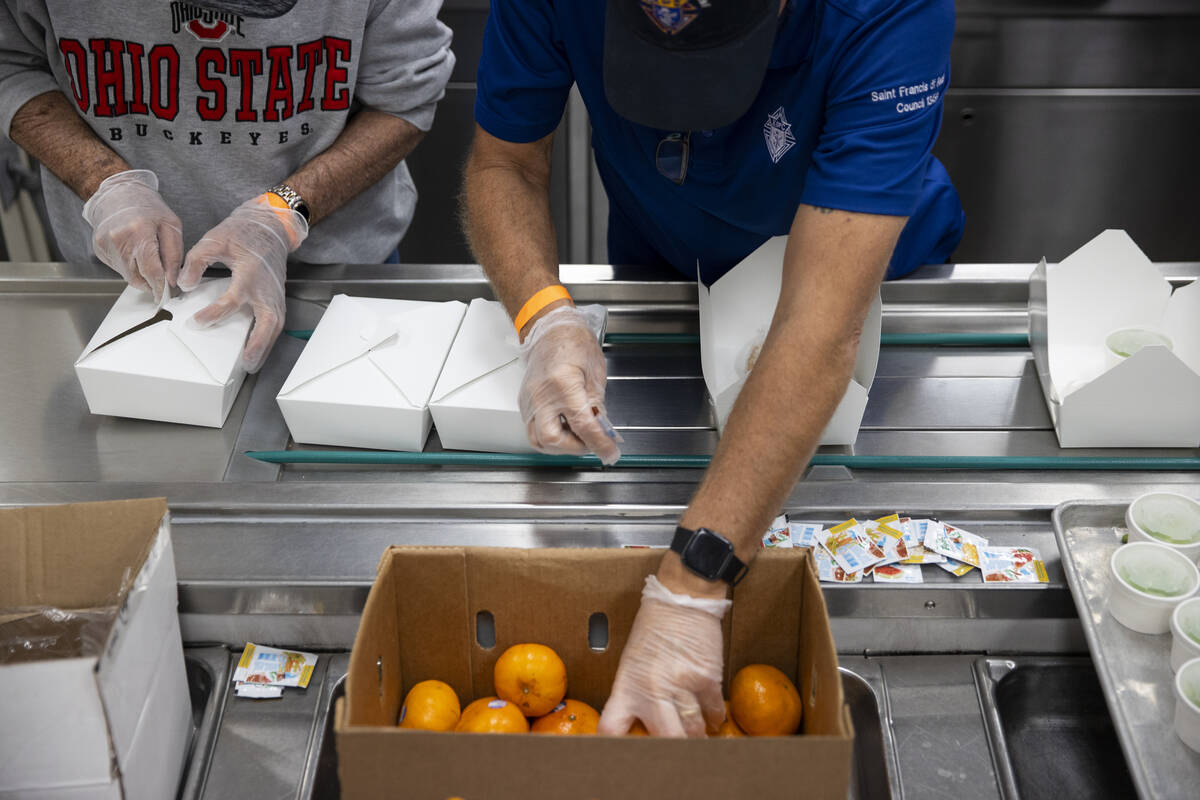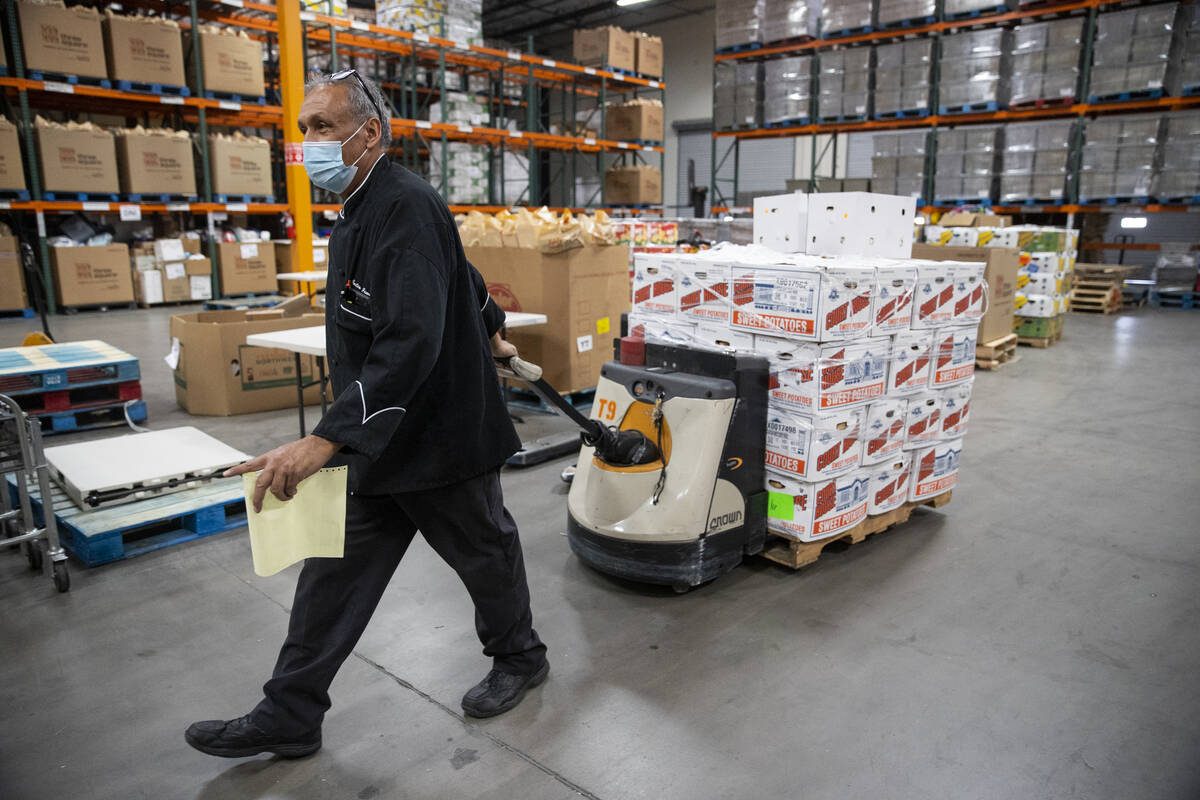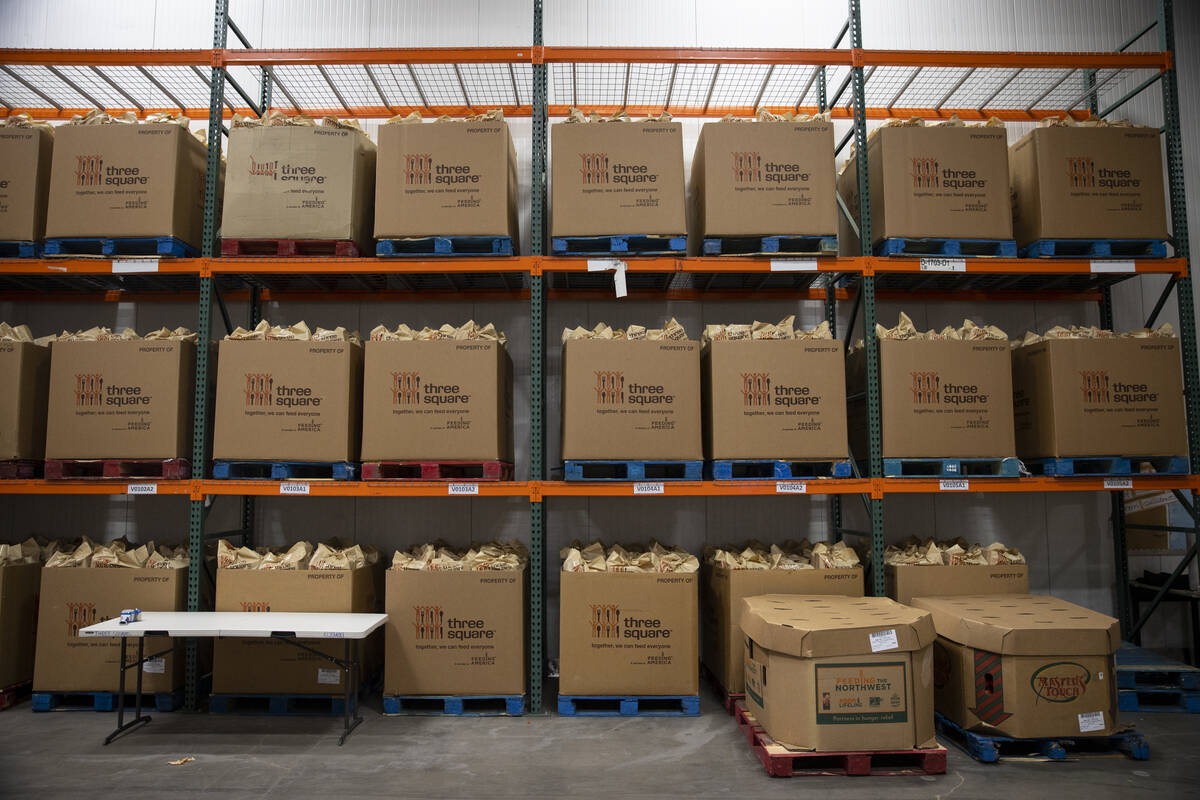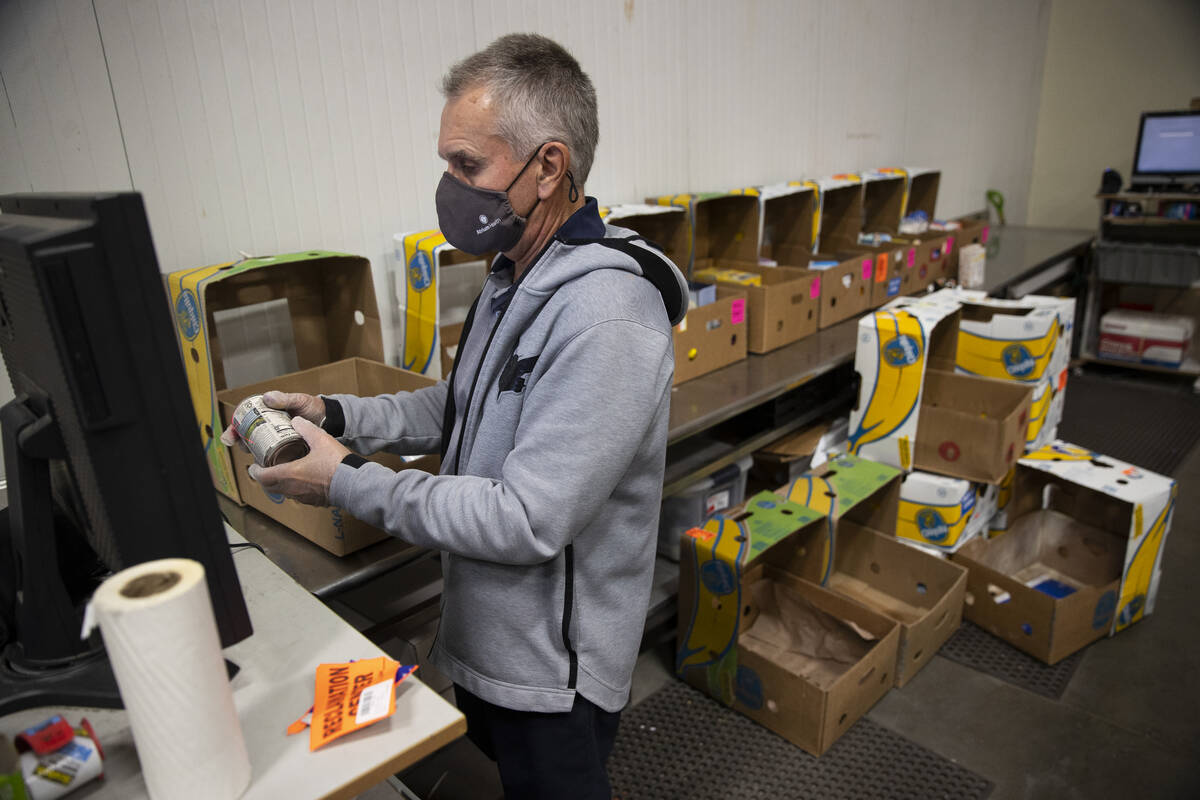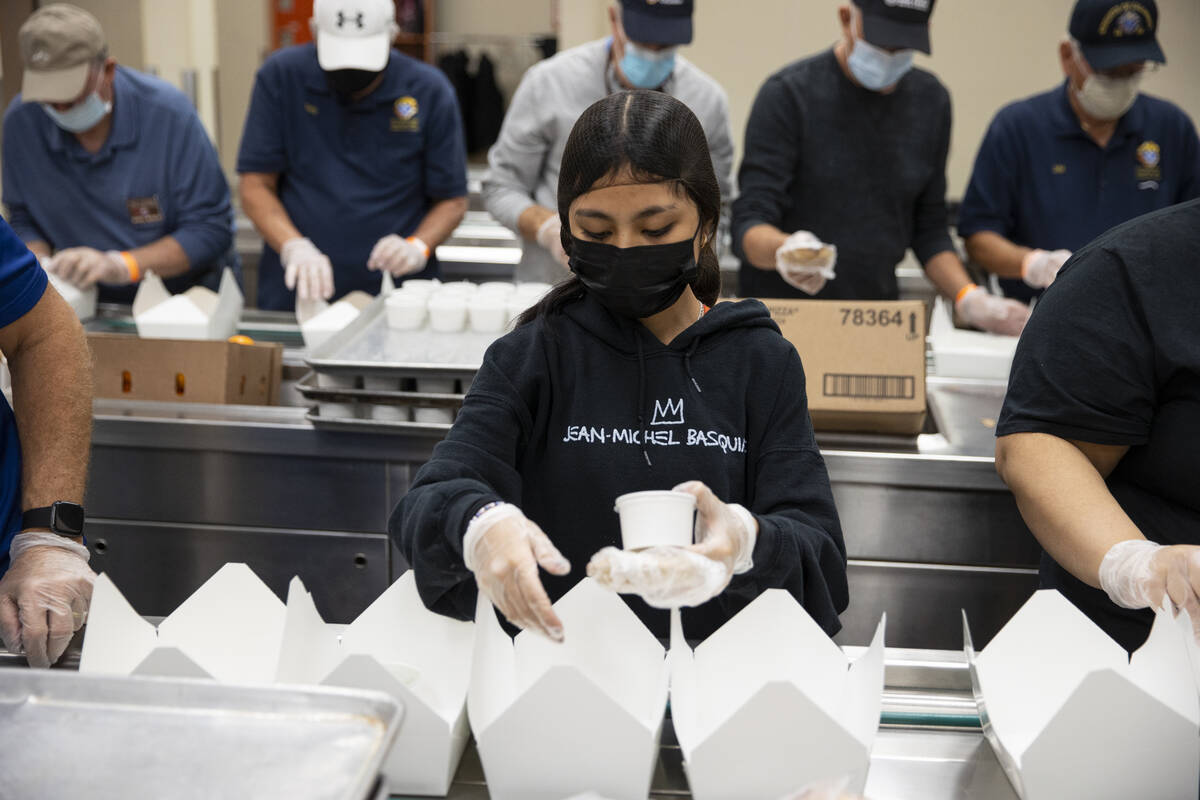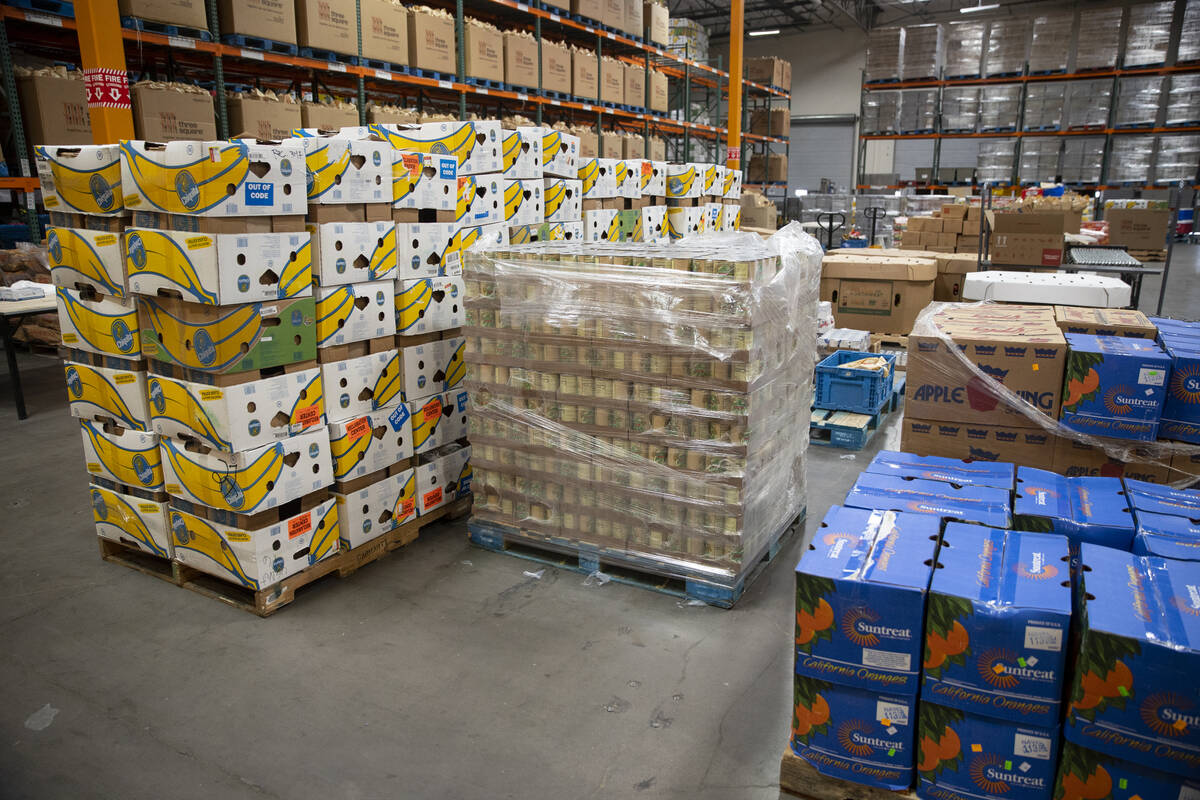Las Vegas food banks struggle with rising food, transportation costs
Rising food and transportation costs are hitting food banks and pantries in Southern Nevada, as the nonprofits deal with the effects of supply chain disruptions while balancing their unprecedented use in the last 18 months.
At places where families and seniors can get a week or two’s worth of cupboard staples, fresh food and even a Thanksgiving turkey, staff must work diligently to get food that increases in price or decreases in availability.
Food prices have risen noticeably in the last year, according to the Consumer Price Index. All food was up on average 5.3 percent in October compared with the 12 months prior. The biggest jump is in meat, poultry, fish and eggs — up 11.9 percent in October 2021 compared with prices in October 2020.
“When food prices go up, then those who are already in a condition of being food-insecure, that situation just gets worse,” said Ian McDonough, a University of Nevada, Las Vegas economist who studies local food insecurity. “(It) puts more stress on the budgets; the dollar doesn’t go as far. And we’re talking about the most basic need: food.”
Trucking costs
But where it’s hitting food pantries and banks the hardest may actually be in freight transportation costs, some local nonprofits said.
As the trucking industry sees significantly fewer drivers on the road than are needed, companies and independent drivers can grab the highest bidder. That can leave nonprofit organizations last in line, said Larry Scott, chief operating officer of Three Square, the only food bank in Southern Nevada.
“Other than the food that we rescue from grocery stores and restaurants, most of all the food that we get here is trucked in,” Scott said, noting the limited food crops available within the state. “The transportation costs in most cases have certainly doubled, and in some cases, tripled in the cost of delivering food. That’s the biggest material impact.”
Three Square acts as Southern Nevada’s Feeding America affiliate and distributes its inventory to dozens of food pantries across the Las Vegas Valley. About 30 percent of the food it procures is directly purchased by the nonprofit; the rest is split among the federal government’s commodities program and local food rescue, a sourcing program that gets unused products from grocery stores and restaurants.
The food bank is leaning on its food rescue and commodities to fill gaps from costly or slower-to-deliver foods it directly purchases, Scott said. The warehouse’s $3 million inventory also assures Scott that pantries will remain stocked.
Transportation costs are also a top concern for The Just One Project, a food pantry that partners with Three Square and does some of its own procurement. Founder Brooke Neubauer said the impact is especially apparent on the supply of fruits and vegetables, which is a top priority for the nonprofit’s mobile food banks and a community market in central Las Vegas. She estimates costs to ship produce from California have doubled or tripled compared with costs during an average year.
“It’s just been really hard for us to provide all of the fresh produce — fresh fruits and vegetables that we’re used to providing and it’s made our costs just jump so darn high,” she said.
Food security organizations must absorb the cost or lean more heavily on other sources to avoid an impact on clients. And while children are back at school with access to free breakfast and lunch, seniors may feel inflation’s effects on food more acutely.
Food insecurity among those 60 years and older in Southern Nevada is 36.7 percent, according to a survey conducted by McDonough and other UNLV researchers in November and December 2020. Their fixed incomes means they have less purchasing power as food prices rise.
Surprise impacts
How long this will last is unclear. Economists expect the inflation rate to cool as goods’ supply can match the resurgence in demand, but they need more data to predict just when that could be, McDonough said.
“It’s not something akin to ’70s-style inflation,” McDonough said. “This literally stemmed from turning the global economy off like a light switch, given the pandemic, then suddenly turning it back on. So it’s hard to say that we have enough data to really even know when this inflation spike will subside.”
While Scott is confident the nonprofit can get what it needs because contracts with vendors and freight companies are often finalized several months ahead of delivery, some obstacles still persist, he said.
“The surprises come in as far as why certain products can’t happen,” Scott said. “Sometimes we can’t get product in because they can’t get the aluminum cans.”
Scott notes that it’s an assortment of things needed to make it all work.
“You’ve got the product that goes in the can, you got the cans, you got the drivers, you got the fuel costs. There’s just so many different barriers in getting it done. It’s the full makeup of the barriers that makes our days long.”
McKenna Ross is a corps member with Report for America, a national service program that places journalists into local newsrooms. Contact her at mross@reviewjournal.com. Follow @mckenna_ross_ on Twitter.



